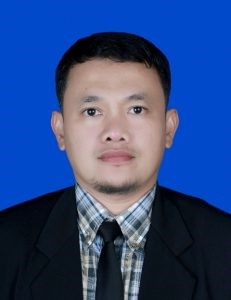Keynote speaker

Assoc. Prof. Dr. Nur Islami
Physics PMIPA Department Universitas Riau, Indonesia
Research Area:Hydrogeophysics for Environmental
Title:Integrated of geophysical and hydrochemical methods to investigate the geothermal potential: A case study from Rokan Hulu, Indonesia
Abstract
Renewable energy is the main solution in facing the global warming and the word energy crisis. Geothermal is one of the renewable energy without any effects to the global warming. The purpose of this study is to model geothermal potential using the integrated geoelectrical resistivity and magnetic survey method. A simple approach was proposed in this study, which is the relationship between the direct resistivity measurements with the earth material, so that it will reduce the ambiguity in the interpretation of resistivity data. From geoelectrical resistivity data, it can be seen that the study area consist of metasediment rocks, sedimentary rocks and fracture zone of the rocks. These fracture zone is oriented towards the south, which is the massive igneous rock can be found as far as 8 km from the hot spring. While the geomagnetic data indicates that the research area contains a possibility of the hot zone which is the main source of geothermal energy. In conclusion, the study area has potential to be developed in generating geothermal energy resources.

Prof. Cao Guan
Northwestern Polytechnical University/Institute of Flexible Electronics, China
Title:METAL ORGANIC FRAMEWORK DERIVED HOLLOW ARRAYS FOR FLEXIBLE ENERGY STORAGE AND CONVERSION
Abstract
Metal–organic frameworks (MOFs) are promising porous precursors for the construction of various functional materials for high-performance electrochemical energy storage and conversion. Herein we report several facile methods to rational design of novel nanoarrays on flexible carbon cloth substrate. One example is hollow NiCo2O4 nanoarrays obtained from a two-dimensional (2D) cobalt-based MOF. When evaluated as a flexible electrode material for supercapacitor, the as-fabricated NiCo2O4 electrode shows remarkable electrochemical performance with excellent rate capability and long cycle life. Another example is hollow Co3O4 nanospheres embedded in nitrogen-doped carbon nanowall arrays on flexible carbon cloth (NC-Co3O4/CC). A carbon onion coating constrains the Kirkendall effect to promote the conversion of the Co nanoparticles into irregular hollow oxide nanospheres with a fine scale nanograin structure, which enables promising catalytic properties toward both OER and ORR. The integrated NC-Co3O4/CC can be used as an additive-free air-cathode for flexible all-solid-state zinc-air batteries, which presents high open circuit potential (1.44 V), high capacity (387.2 mAh g-1, based on the total mass of Zn and catalysts), excellent cycling stability and mechanical flexibility. Our work provides good examples of rational design of hollow nanostructured arrays with high electrochemical performance and mechanical flexibility, holding great potential for future flexible multi-functional electronic devices.

Assoc. Prof. Zhenbo Xu
South China University of Technology, China
Title:A Novel Precise Targeting Based Antimicrobial Strategy
Abstract
In this study, a novel precise targeting based antimicrobial strategy using different new materials had been developed and evaluated. Firstly, an isothermal amplification with SPR biosensor platform has been designed and developed to determine bacterial species and characteristics (including antimicrobial resistance and pathogenic capability) of common pathogens. In details, the isothermal amplification assays, including PSR, RCA, RPA and LAMP had been developed to detect species specific, important antimicrobial resistance and pathogenic genetics of common pathogens, such as E. coli, S. aureus, Salmonella, P. aeruginosa, L. monocytogenes, V. parahaemolyticus and Lactobacillus. Then the SPR chips and a biosensor equipment with isothermal function are designed and developed, which are capable of determining the isothermal amplification results. Secondly, bacterial staging has been studied using the biofilm formation model. As the growth model of more than 99% microorganisms in nature, biofilm is the major growth model of all microorganisms, however, most of the currently available antimicrobial strategies had been based on planktonic cells, let alone consideration on different staging of biofilms. In this study, the biofilm staging of major pathogens had been characterized during different time points, such as 8, 16, 24, 48, 72, 168 and 336 h. Biomass by CV, viability by XTT and morphology by SEM had been further performed to determine the microbial characteristics during different biofilm staging.








